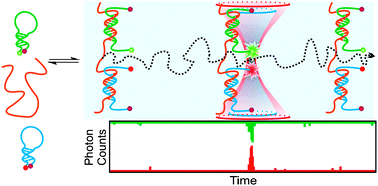Recent use of fluorescent labels in nanotechnology drug delivery, medical, biochemical and biological science:
http://www.lumiprobe.com/citations
Nooney, R.; O’Connell, C.; Roy, S.; Boland, K.; Keegan, G.; Kelleher, S.; Daniels, S.; McDonagh, C. Synthesis and characterisation of far-red fluorescent cyanine dye doped silica nanoparticles using a modified microemulsion method for application in bioassays. Sensors and Actuators B: Chemical, 2015, in press. doi: 10.1016/j.snb.2015.06.117
Li, H.; Yang, Z.-Y.; Liu, C.; Zeng, Y.-P.; Hao, Y.-H. Gu, Y.; Wang, W.-D.; Li, R. PEGylated ceria nanoparticles used for radioprotection on Human liver cells under γ-ray irradiation , 2015, in press. doi: 10.1016/j.freeradbiomed.2015.06.010
Ma, Y.; Fuchs, A.; Boase, N.R.B.; Rolfe, B.E.; Coombes, A.G.A.; Thurecht, K.J. The in vivo fate of nanoparticles and nanoparticle-loaded microcapsules after oral administration in mice: evaluation of their potential for colon-specific delivery. European Journal of Pharmaceutics and Biopharmaceutics, 2015, 94, 393–403. doi: 10.1016/j.ejpb.2015.06.014
Noriega, R.; Finley, D.T.; Haberstroh, J.; Geissler, P.L.; Francis, M.B.; Ginsberg, N.S. Manipulating Excited-State Dynamics of Individual Light-Harvesting Chromophores through Restricted Motions in a Hydrated Nanoscale Protein Cavity. The Journal of Physical Chemistry B, 2015, 119(23), 6963–6973. doi:
10.1021/acs.jpcb.5b03784
Shi, Y.; van der Meel, R.; Theek, B.; Oude Blenke, E.; Pieters, E.H.E.; Fens, M.H.A.M.; Ehling, J.; Schiffelers, R.M.; Storm, G.; van Nostrum, C.F.; Lammers, T.; Hennink, W.E. Complete Regression of Xenograft Tumors upon Targeted Delivery of Paclitaxel via Π–Π Stacking Stabilized Polymeric Micelles. ACS Nano, 2015, 9(4), 3740–3752. doi: 10.1021/acsnano.5b00929
Duong, H.T.T.; Dong, Z.; Su, L; Boyer, C.; George, J.; Davis, T.P.; Wang, J. The Use of Nanoparticles to Deliver Nitric Oxide to Hepatic Stellate Cells for Treating Liver Fibrosis and Portal Hypertension. Small, 2015, 11(19), 2291–2304. doi: 10.1002/smll.201402870
Wen, A.M.; Infusino, M.; De Luca, A.; Kernan, D.L.; Czapar, A.E.; Strangi, G.; Steinmetz, N.F. Interface of Physics and Biology: Engineering Virus-Based Nanoparticles for Biophotonics. Bioconjugate Chemistry, 2015, 26(1), 51–62. doi: 10.1021/bc500524f
Nooney, R.I.; White, A.; O’Mahony, C.; O’Connell, C.; Kelleher, S.M.; Daniels, S.; McDonagh, C. Investigating the colloidal stability of fluorescent silica nanoparticles under isotonic conditions for biomedical applications. Journal of Colloid and Interface Science, 2015, 456, 50–58. doi: 10.1016/j.jcis.2015.05.051
Lumiprobe citation list
- research publications citing use of fluorescent reagents, sortable by date or cited product.
- cyanine NHS esters, amines, azides, alkynes, hydrazides, maleimides, carboxylic acids
Lumiprobe catalog
Other citations:
http://www.lumiprobe.com/citations
Protocols
http://www.lumiprobe.com/protocols
Lumiprobe sponsors nanpaprika.eu
For 5% discount when you order use code: nanopap










 Cyanine5.5 hydrazide
Cyanine5.5 hydrazide  Brand, C.; Abdel-Atti, D.; Zhang, Y.; Carlin, S.D.; Clardy, S.M.; Keliher, E.J.; Weber, W.A.; Lewis, J.S.; Reiner, T.
Brand, C.; Abdel-Atti, D.; Zhang, Y.; Carlin, S.D.; Clardy, S.M.; Keliher, E.J.; Weber, W.A.; Lewis, J.S.; Reiner, T. Zhao,Y.; Meek, G.A.; Levine, B.G.; Lunt, R.R.
Zhao,Y.; Meek, G.A.; Levine, B.G.; Lunt, R.R. BDP FL - borondipyrromethene dye is an excellent dye for fluorescein (FAM) channel.
BDP FL - borondipyrromethene dye is an excellent dye for fluorescein (FAM) channel. BDP FL azide
BDP FL azide  BDP FL NHS ester
BDP FL NHS ester 